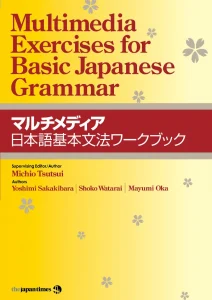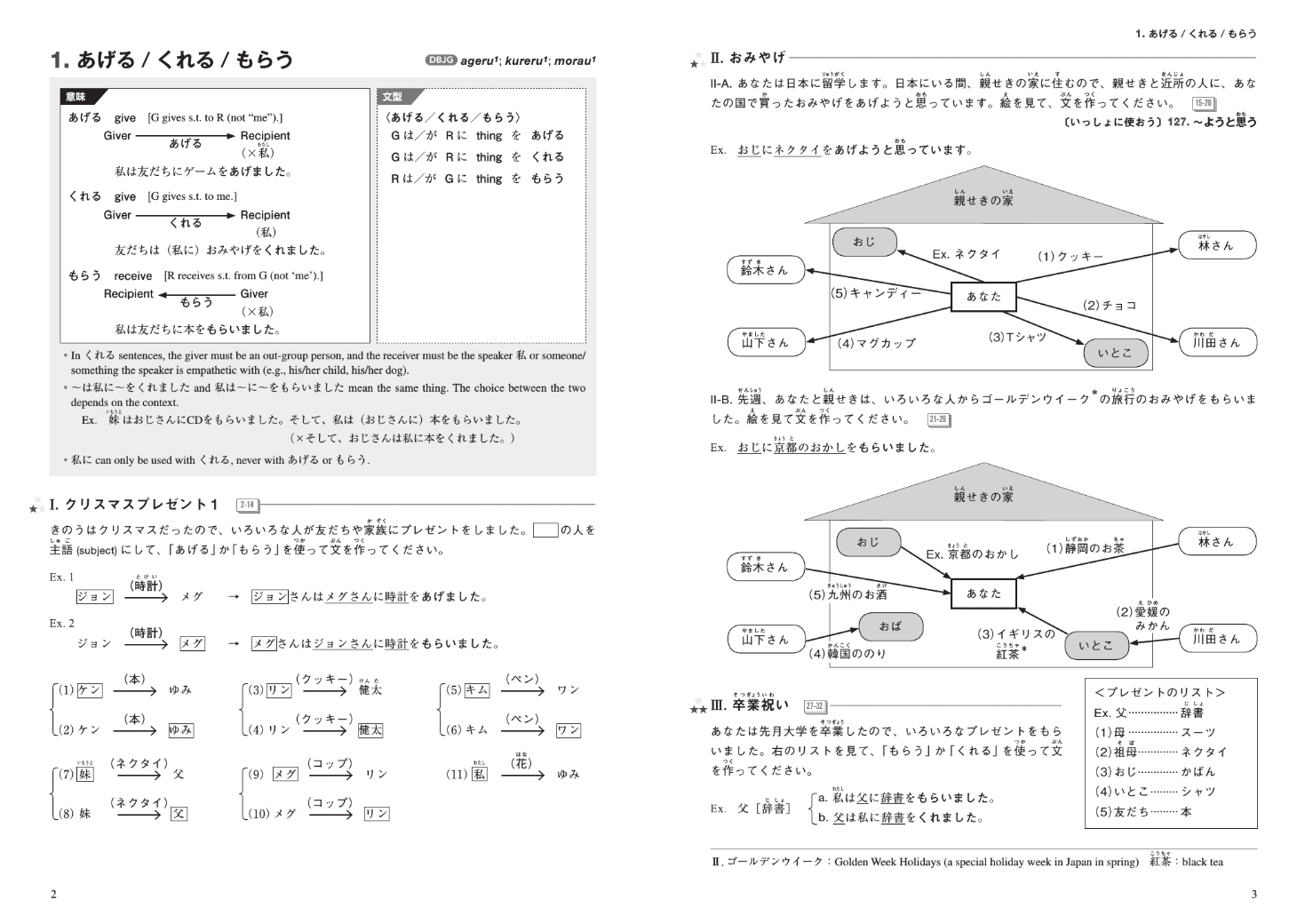Multimedia Exercises for Basic Japanese Grammar
マルチメディア日本語基本文法ワークブック
Before ReadingMultimedia Exercises for Basic Japanese Grammar is a workbook designed for practicing the basic grammar items covered in A Dictionary of Japanese Grammar. It presents 127 units of exercises encompassing 154 key grammar items selected from DBJG and intransitive/transitive verbs.
Each unit provides step-by-step practice progressing from basic to applied. Free downloadable PowerPoint slides are available for all exercises except reading practices and multiple-choice problems. Whether used for the classroom or self-study, these slides can enhance mastery of basic grammar if learners practice vocalizing the material while looking at the text/illustrations on the slides and listening to the audio files embedded in them.
You can download the PowerPoint files at this link.
What does Multimedia Exercises for Basic Japanese Grammar cover?
The book covers a wide variety of Grammar points covered in the main book. There isn't much to contextualise the grammar points beyond this, but as a grammar book, this is to be expected. The units covered are:
| Unit | Grammar Point (Japanese/English) | Unit | Grammar Point (Japanese/English) |
|---|---|---|---|
| 1 | あげる/くれる/もらう (ageru/kureru/morau) | 2 | (~て)あげる/くれる/もらう (te-ageru/kureru/morau) |
| 3 | 間(に) (aida(ni)) | 4 | あまり (amari) |
| 5 | (~て)ある (te-aru) | 6 | ある/いる (aru/iru) |
| 7 | ば/ばよかった (ba/ba yokatta) | 8 | ばかり (bakari) |
| 9 | だけ (dake) | 10 | ~だけで(は)なく~(も) (~dakede(wa)naku~(mo)) |
| 11 | だろう (darou) | 12 | で (means) (de) |
| 13 | でも (demo) | 14 | どう (dou) |
| 15 | へ/に (to; toward) (e/ni) | 16 | が (but) (ga) |
| 17 | が/は (ga/wa) | 18 | がる (garu) |
| 19 | ごろ/くらい (goro/kurai) | 20 | ~はじめる/おわる (~hajimeru/owaru) |
| 21 | はず (hazu) | 22 | ほど (hodo) |
| 23 | ほうがいい (hoo ga ii) | 24 | ほしい (hoshii) |
| 25 | (~て)ほしい (te-hoshii) | 26 | 一番 (ichiban) |
| 27 | 行く/来る (iku/kuru) | 28 | Intransitive/Transitive Verbs |
| 29 | (~て)いる (te-iru) | 30 | か (or) (ka) |
| 31 | か (question marker)/か(どうか) (ka/ka(dooka)) | 32 | かもしれない (kamoshirenai) |
| 33 | から (because) (kara) | 34 | (~て)から (te-kara) |
| 35 | から (from)/まで/までに (kara/made/madeni) | 36 | ~方 (kata) |
| 37 | かわりに (kawarini) | 38 | けれども (keredomo) |
| 39 | こと (thing) (koto) | 40 | こと (nominalizer) (koto) |
| 41 | ことがある (there are times when ~) | 42 | ことがある (there was a time when ~) |
| 43 | ことができる (koto ga dekiru) | 44 | ことになる (koto ni naru) |
| 45 | ことにする (koto ni suru) | 46 | (~て)ください (te-kudasai) |
| 47 | (~て)くる/いく (te-kuru/iku) | 48 | まだ/もう (mada/moo) |
| 49 | 前に/あとで (maeni/atode) | 50 | まま (mama) |
| 51 | ~ましょう (mashoo) | 52 | (~て)みる (te-miru) |
| 53 | も (too; (not) ~ either) (mo) | 54 | も (even) (mo) |
| 55 | も (Wh+も~ない) (mo) | 56 | ~も~も (mo~mo) |
| 57 | ながら (nagara) | 58 | ~ないで (naide) |
| 59 | なければならない/なくてはいけない (nakereba naranai/nakute wa ikenai) | 60 | ~なくなる (nakunaru) |
| 61 | ~なくて (nakute) | 62 | なら (nara) |
| 63 | ね (ne) | 64 | に (point of time) (ni) |
| 65 | に (direct contact) (ni) | 66 | に (purpose) (ni) |
| 67 | に/で (location) (ni/de) | 68 | にちがいない (ni chigainai) |
| 69 | の (possessive) (no) | 70 | の (one) (no) |
| 71 | の (nominalizer) (no) | 72 | の (sentence ending)/のだ (no/noda) |
| 73 | ので (node) | 74 | のに (noni) |
| 75 | ~のは~だ (no wa ~da) | 76 | を (direct object) (o) |
| 77 | を (space marker) (o) | 78 | 多い/少ない (ooi/sukunai) |
| 79 | (~て)おく (te-oku) | 80 | お~になる+尊敬動詞 (o~ni naru + sonkeidoshi) |
| 81 | お~する+謙譲動詞 (o~suru + kenjoudoushi) | 82 | られる (passive) (rareru) |
| 83 | られる (potential) (rareru) | 84 | らしい (rashii) |
| 85 | Relative Clause | 86 | させる (saseru) |
| 87 | し (shi) | 88 | しか (shika) |
| 89 | (~て)しまう (te-shimau) | 90 | 知る/分かる (shiru/wakaru) |
| 91 | そうだ (hearsay) (souda) | 92 | そうだ (conjecture) (souda) |
| 93 | それでは (soredewa) | 94 | それから (sorekara) |
| 95 | ~すぎる (sugiru) | 96 | 好きだ/きらいだ (sukida/kiraida) |
| 97 | する/なる (suru/naru) | 98 | たい (tai) |
| 99 | ため(に) (tame(ni)) | 100 | たら/たらどうですか (tara/tara doo desu ka) |
| 101 | ~たり~たりする (tari~tari suru) | 102 | ~て (te) |
| 103 | ても (temo) | 104 | てもいい/てはいけない (temo ii/te wa ikenai) |
| 105 | と (with; reciprocal) (to) | 106 | と (if; when) (to) |
| 107 | と(思う) (to omou) | 108 | と/や (and) (to/ya) |
| 109 | という (to iu) | 110 | とか (toka) |
| 111 | 時 (toki) | 112 | ところだ (be about to, etc) (tokoro da) |
| 113 | として (to shite) | 114 | つもり (tsumori) |
| 115 | うちに (uchi ni) | 116 | ~は~だ (~wa~da) |
| 117 | ~は~が (~wa~ga) | 118 | ~やすい/にくい (~yasui/~nikui) |
| 119 | よ (yo) | 120 | ようだ (yooda) |
| 121 | ように (like; as; as if) (yooni) | 122 | ように (so that) (yooni) |
| 123 | ように言う (yooni iu) | 124 | ようになる (yooni naru) |
| 125 | ようにする (yooni suru) | 126 | より/~ほうが~より (yori/~hoo ga~yori) |
| 127 | ~ようと思う (~yoo to omou) |
Student Review

Multimedia Exercises for Basic Japanese Grammar is a workbook designed to go along with The Japan Times’ A Dictionary of Japanese Grammar. It’s really more of a teacher’s resource, but it’s packed with extra questions and exercises to help students get deeper into the material from the main book.
Don’t expect to swap out your Genki or Minna no Nihongo textbooks for this though, as there’s not a lot of step-by-step guidance here. The questions and answers are all in Japanese, so you’ll want to be at least an upper beginner before jumping in. If you use it alongside the main dictionary, it’s super useful, but you’ll need enough Japanese under your belt to understand what the book is actually asking for, or a tutor to help you through.
One of the best aspects of the package is the downloadable PowerPoints that come with the book, which you can download without even buying it.
So who’s this book best for? If you’re looking to review or brush up on grammar you’ve already learned, it’s a great resource kind of like the dictionary it’s based on.
Multimedia Exercises for Basic Japanese Grammar is a really useful resource for those that have already finished Genki 1 or are halfway through Genki 2, as an extra way to revise. Think of it as extra practice of learning what you already know, but this time in Japanese.
Another useful way in which this book challenges students is that it grades the tasks by difficulty. Each grammar point will have a group of exercises ranked by stars: ★ for easy questions, ★★ for moderate, and ★★★ for advanced. This makes it easy to tailor your study session to your comfort level and gradually push yourself further.
I’ve noticed that students who sometimes struggle to grasp the subtle differences in how certain particles are used for various purposes really benefit from the way this book breaks things down into separate sections. For example, the particle の is covered in four different ways: as a possessive, as a nominalizer, as a sentence ender, and how it can replace nouns. Having these uses clearly separated makes it much easier to understand and remember how to use の correctly in different situations.
The index is also particularly useful, as it tells users which PowerPoint files to pair with each unit. While students can study using this book without the slides, I really recommend using them, as the images provided can help to add extra context.
Teacher Review

Before using Multimedia Exercises for Basic Japanese Grammar:
As a workbook, you absolutely need A Dictionary of Japanese Grammar before buying this book. You can’t get much use out of it without it!
We also strongly suggest that you’ve finished at least Genki 1 as the way in which this book presents its grammar points is for lower intermediate learners.
What to read next?
The next step would be A Dictionary of Intermediate Japanese Grammar. Though, unfortunately, there is no workbook the intermediate book.
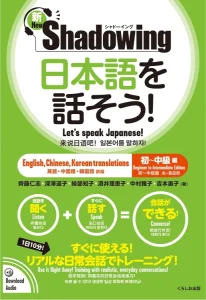
Shadowing: Let’s Speak Japanese! Beginner to Intermediate
Review of “New Shadowing: Let’s Speak Japanese!” N5–N2, audio shadowing drills and casual–polite dialogues to boost natural speech.
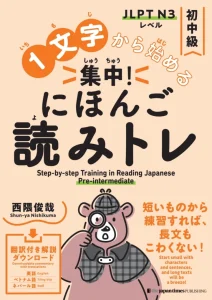
Step-By-Step Training in Reading Japanese: Pre-Intermediate
Master JLPT N3 reading with clear, progressive training books that improve kanji, grammar, and comprehension skills.
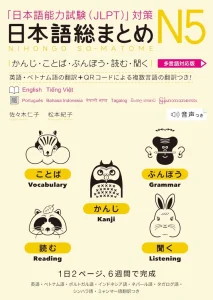
Nihongo Sou Matome N5
Structure your study with Nihongo Sou Matome JLPT N5! Prepare for your exam with 6 weeks of planned grammar, listening, vocab and kanji study.

